In the evolving landscape of interior design, the selection of an area rug transcends mere aesthetics, becoming a pivotal decision that reflects on both the ambiance and practical utility of a space. As 2024 ushers in innovative trends, materials, and consumer demands, understanding the nuances of area rugs becomes essential. These pieces not only anchor the decor of a room but also offer comfort, enhance acoustics, and demonstrate a commitment to sustainability. For those tasked with curating environments, be it for workspaces or commercial settings, the choice of an area rug is a testament to strategic design thinking and an awareness of emerging preferences.
Table of Contents
1. Types and uses of area rugs
2. 2024 market insights: Trends and data
3. Selecting the ideal area rug
4. Leading models and what sets them apart
5. Conclusion
Types and uses of area rugs
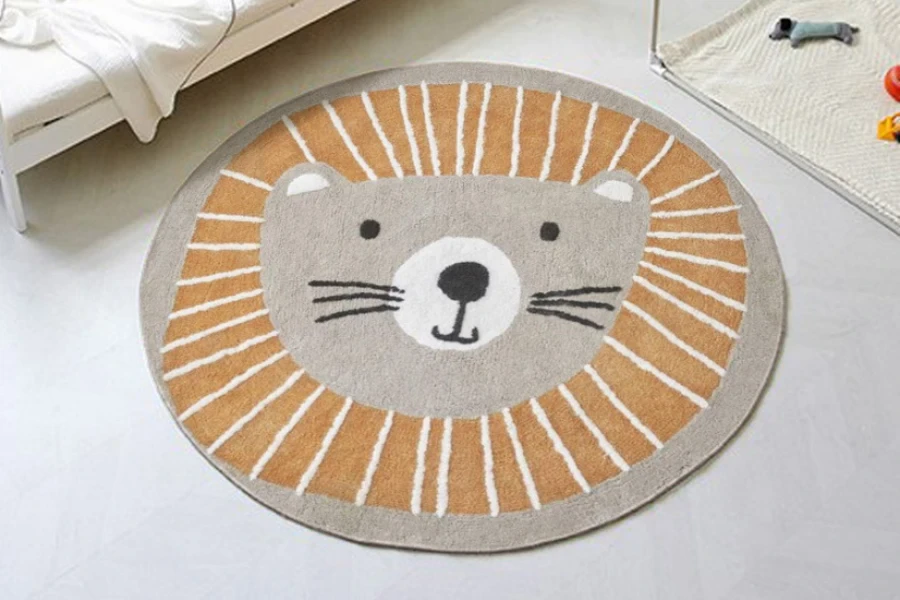
The functionality of area rugs extends across various settings, each with its unique requirements. In commercial spaces, area rugs contribute to creating an inviting atmosphere, potentially reducing noise in high-traffic areas and contributing to the overall branding by aligning with color schemes and design motifs. In contrast, in residential settings, area rugs often serve to demarcate spaces, add warmth, and complement the interior design scheme, making spaces feel more cohesive and polished.
Material matters: Wool, cotton, and synthetics
Area rugs can significantly transform a space, not only by adding a layer of comfort and style but also through their functional benefits. The material from which an area rug is made plays a crucial role in its appearance, feel, durability, and ease of maintenance. Here’s a look at the most common types of area rugs based on their materials and the unique benefits each offers:
Wool Rugs: Wool is one of the most popular materials for area rugs due to its natural durability, softness, and resistance to stains and dirt. Wool rugs are known for their thick, luxurious feel, offering warmth and comfort underfoot. They can last for decades with proper care, making them a great investment for homes. Wool’s natural fibers also have the advantage of being flame-resistant and hypoallergenic.

Cotton Rugs: Cotton area rugs are valued for their softness and ease of cleaning. They tend to be more lightweight than wool rugs and can offer a more casual look, making them suitable for a variety of interior designs. Cotton rugs are often machine washable, which adds to their convenience, especially in high-traffic areas or spaces used by children and pets. They are also more affordable than wool, offering a budget-friendly option for those looking to update their space.
Synthetic Rugs: Synthetic fibers, including nylon, polyester, and polypropylene, are widely used in area rugs due to their durability and affordability. These materials can mimic the look and feel of natural fibers but at a lower cost. Synthetic rugs are particularly known for their stain resistance, making them ideal for areas prone to spills. They are also fade-resistant and can handle heavy foot traffic, making them suitable for both indoor and outdoor use.
Silk Rugs: Silk area rugs are prized for their luxurious sheen and exceptional softness. They can add an element of elegance and sophistication to any room. Silk rugs are best suited for low-traffic areas, as they are more delicate and can be challenging to clean. They are often used as statement pieces in living rooms, bedrooms, and other areas where their beauty can be appreciated without the risk of wear and tear.
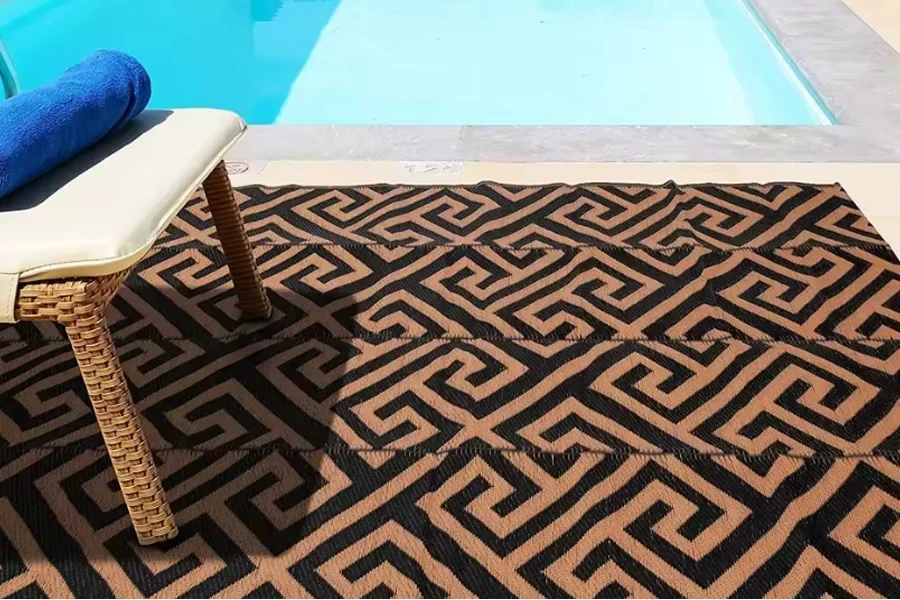
Jute and Sisal Rugs: Jute and sisal rugs offer a natural, earthy look, making them perfect for adding a touch of organic style to a room. These materials are highly durable and suitable for high-traffic areas. Jute and sisal are also eco-friendly options, as they are made from renewable resources. However, these rugs can be rougher underfoot compared to softer materials like wool and cotton, and they may be more difficult to clean in the event of spills.
Bamboo Rugs: Bamboo rugs are known for their sustainability, as bamboo is a highly renewable resource. These rugs offer a unique, exotic look and feel, with a smooth surface that’s easy to clean. Bamboo rugs work well in a variety of settings, offering durability and resistance to moisture and mildew, making them suitable for both indoor and outdoor spaces.
Each type of area rug material offers distinct benefits, from the luxurious feel and durability of wool to the easy maintenance of cotton and the affordability of synthetics. When selecting an area rug, consider the specific needs of your space, including foot traffic, exposure to spills, and your aesthetic preferences, to choose the material that best suits your lifestyle and decor.
Room by room: Matching rugs with spaces
Matching area rugs with spaces involves considering the function, aesthetic, and traffic level of each room. Here are guidelines on how to select area rugs based on room type:
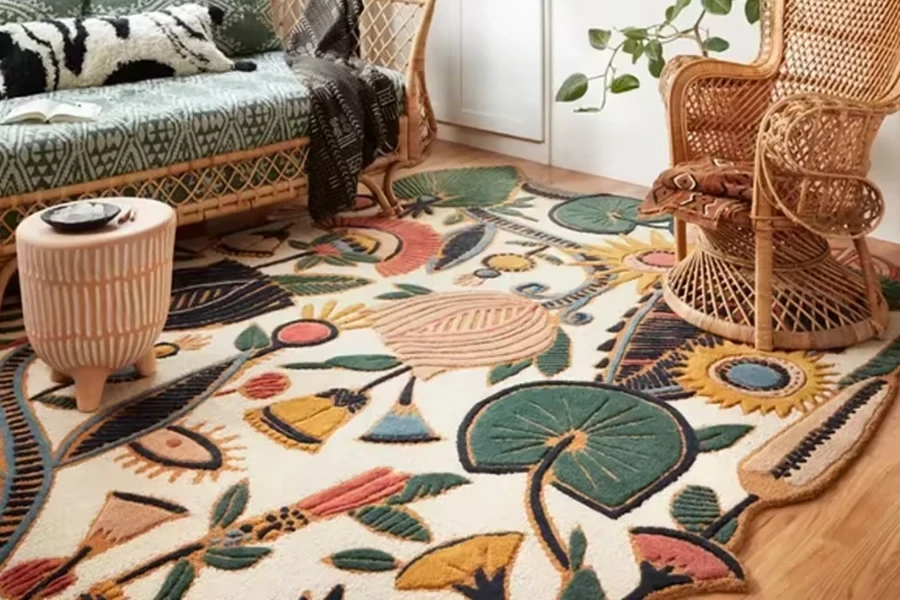
Living Room
Traffic Level: Moderate to High
Recommendation: Choose a durable material like wool or a high-quality synthetic that can handle foot traffic while maintaining comfort. The rug should anchor the seating area, with all furniture on or at least partially on the rug to create a cohesive look.
Dining Room
Traffic Level: Moderate
Recommendation: Opt for easy-to-clean materials such as synthetic fibers or flat-weave cotton rugs that can withstand spills. The rug should be large enough for chairs to stay on the rug even when pulled out.
Bedroom
Traffic Level: Low
Recommendation: Comfort is key. Plush options like shag rugs or soft wools create a cozy underfoot feeling. Consider smaller rugs on either side of the bed or a large rug that extends around the bed to enhance the room’s warmth and comfort.
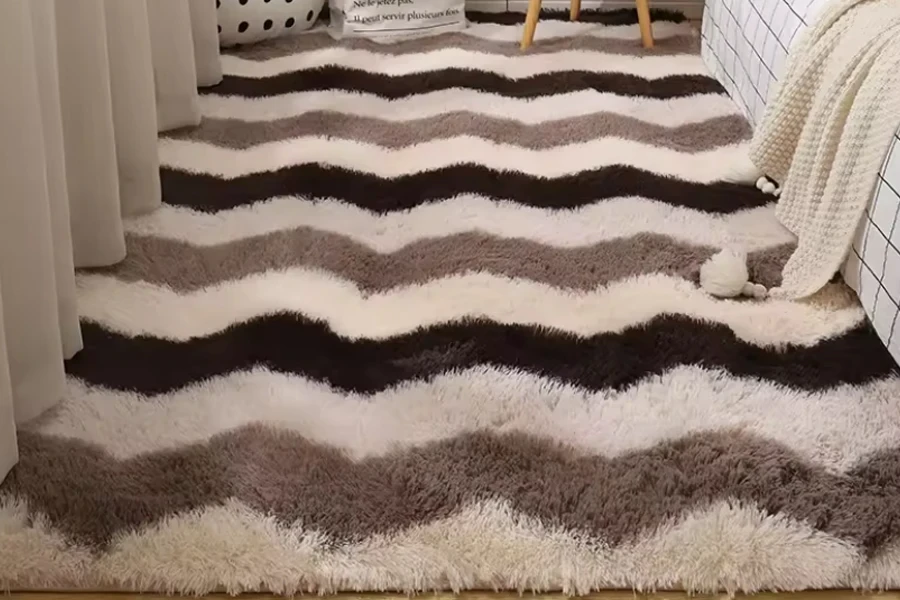
Kitchen
Traffic Level: High
Recommendation: Durability and ease of cleaning are paramount. Flat-weave or low-pile synthetic rugs that are stain-resistant and easy to clean are ideal. Consider anti-fatigue mats for areas where you stand for extended periods.
Hallways and Entryways
Traffic Level: Very High
Recommendation: Look for very durable and easy-to-clean rugs. Nylon, polypropylene, or tightly woven wool rugs can handle the heavy foot traffic common in these areas. Runners are a great option for hallways, providing a path that protects flooring and adds style.
Bathroom
Traffic Level: Moderate to High
Recommendation: Opt for moisture-resistant materials. Bamboo, microfiber, and certain synthetic rugs that can handle damp environments and are quick to dry are suitable choices.
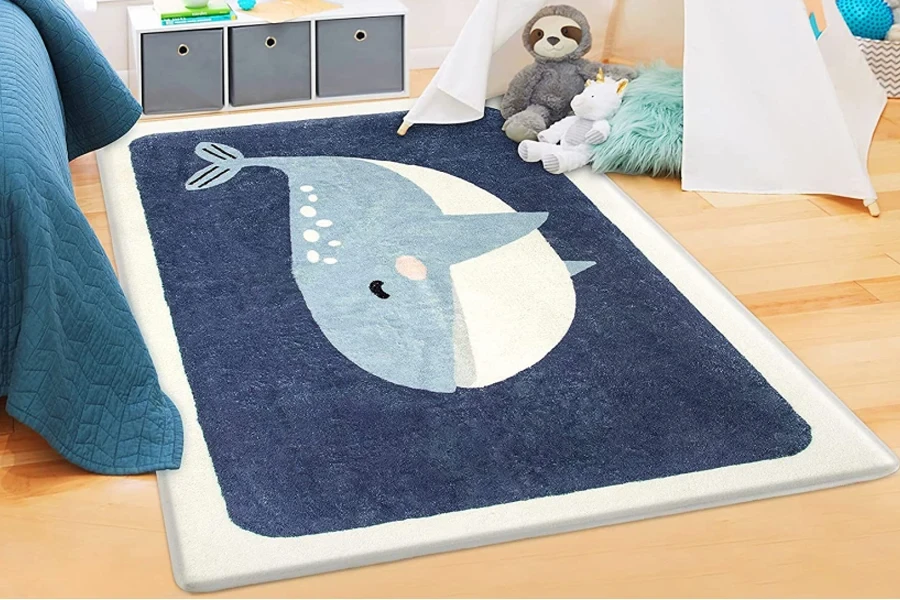
Office or Study
Traffic Level: Low to Moderate
Recommendation: A blend of comfort and durability is ideal. Wool rugs or high-quality synthetics that provide comfort for extended periods of sitting and can endure the movement of chairs.
Children’s Rooms and Playrooms
Traffic Level: High
Recommendation: Look for rugs that are soft, for comfort and play, yet durable and easy to clean. Bright colors and patterns that hide stains well are ideal. Materials like cotton or stain-resistant synthetics work well.
Outdoor Areas (Patios, Decks)
Traffic Level: Varies
Recommendation: Materials designed for outdoor use, such as polypropylene, are essential. These rugs resist fading, mold, and mildew and can handle weather elements.
When selecting an area rug, also consider the overall decor style of the room, the color scheme, and the mood you want to create. Matching rugs with spaces is not just about practicality but also about enhancing the aesthetic appeal and comfort of your home.
2024 market insights: Trends and data
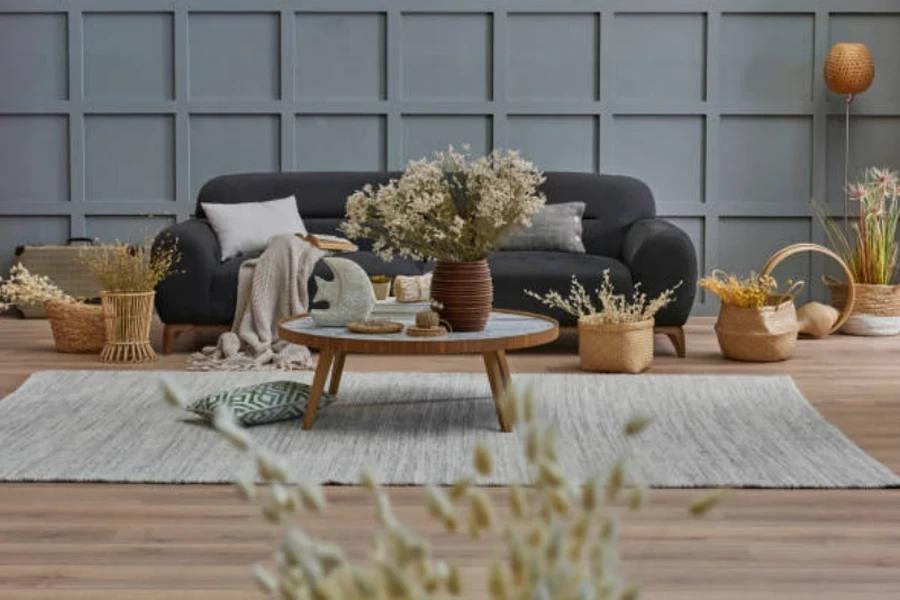
The area rug market is witnessing a significant transformation, propelled by evolving consumer behaviors and a collective shift towards sustainability. This shift is not only influencing preferences but also driving innovation within the industry, leading to the development of eco-friendly practices and materials.
Growth projections and consumer preferences
The Area Rugs Market is poised for substantial growth in the coming years, with projections indicating a surge from USD 32,215.24 million in 2022 to USD 45,383.8 million by 2028. This growth trajectory represents a Compound Annual Growth Rate (CAGR) of 5.88% during the forecast period. The expansion of the Area Rugs market is driven by a combination of factors, including evolving consumer preferences and the increasing demand for residential and non-residential applications worldwide.
Consumer preferences in the Area Rugs market are shifting towards products that not only enhance aesthetic appeal but also offer practical benefits. This includes a growing inclination towards rugs made from sustainable and eco-friendly materials such as wool, cotton, sisal, jute, sea grass, and synthetics. The diversity in material choice reflects a broader consumer trend towards personalization and sustainability, with individuals seeking products that align with their values and lifestyle needs.
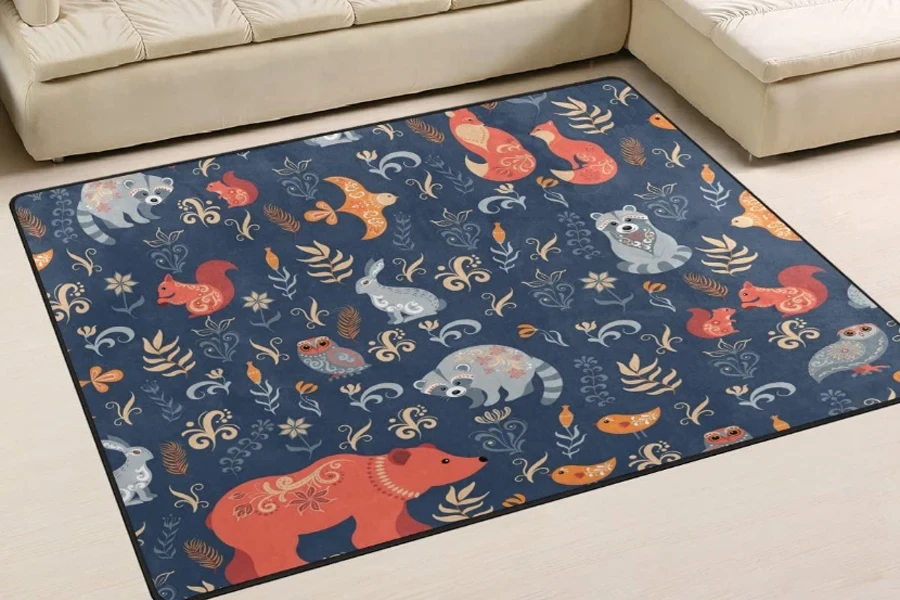
The rise in demand for Area Rugs across various applications is further fueled by their ability to transform living spaces. In residential settings, area rugs add warmth, comfort, and a touch of personality, serving as focal points in room decor. For non-residential spaces, such as offices, hotels, and other commercial venues, area rugs contribute to creating inviting and dynamic environments that enhance the overall user experience.
This growth is supported by the industry’s leading manufacturers, including Mohawk Industries, Balta Industries, and Shaw Industries, among others. These key players are at the forefront of innovation, offering a wide range of Area Rugs that cater to the diverse needs and preferences of the global market. Their commitment to quality, sustainability, and design excellence plays a crucial role in driving the market forward.
As the Area Rugs market continues to expand, it presents significant opportunities for businesses and investors to tap into this growing sector. By understanding the driving factors behind market growth and staying attuned to consumer preferences, companies can strategically position themselves to capitalize on the emerging trends and meet the evolving demands of the global market.
Impact of eco-friendly and sustainable practices
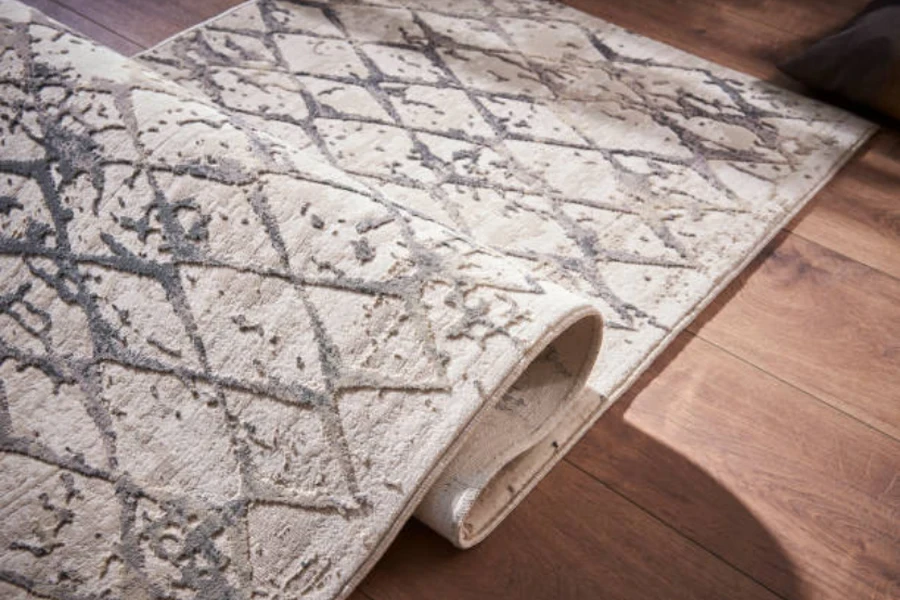
Sustainability is becoming a cornerstone of production and selection processes in the area rug market. Manufacturers are adopting eco-friendly practices, from sourcing sustainable materials to implementing energy-efficient production methods, in response to consumer demand for environmentally responsible products. This trend is not only influencing the types of materials used but also encouraging innovations in dyeing and weaving techniques to minimize water usage and reduce chemical waste.
The emphasis on sustainability is also reflected in the end products, with a notable increase in the availability of organic and natural rugs. These products not only appeal to environmentally conscious consumers but also contribute to healthier indoor environments by reducing exposure to synthetic materials and volatile organic compounds (VOCs).
As the market continues to evolve, it’s clear that sustainability will remain a key driver of consumer preferences and industry innovation. The demand for eco-friendly area rugs is expected to grow, further influencing the types of products available and encouraging companies to adopt sustainable practices throughout their supply chains. This shift towards sustainability not only meets the current demand but also sets the stage for long-term growth and development within the industry, ensuring that area rugs continue to be a vital component of home and commercial decor while also contributing to environmental conservation.
Selecting the ideal area rug
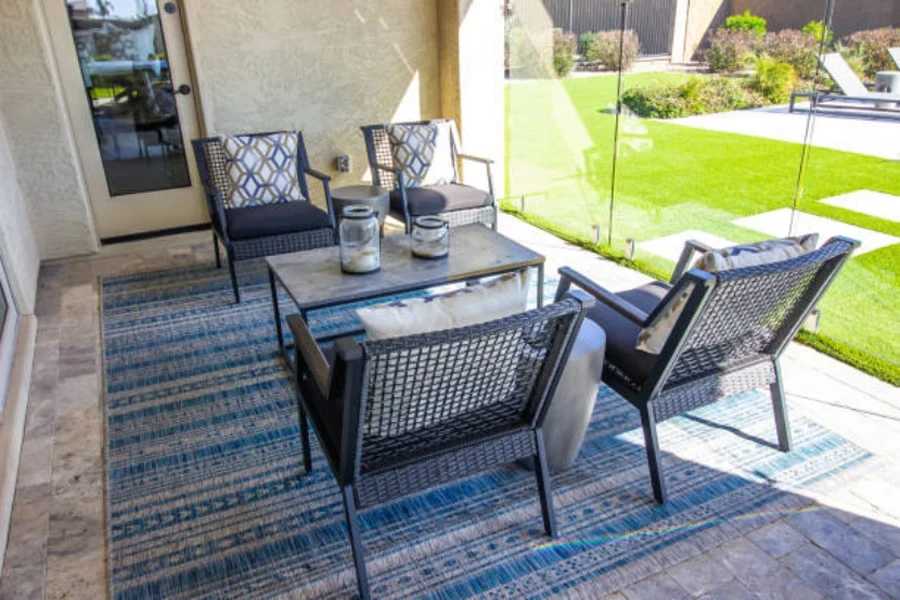
Selecting the ideal area rug for high-traffic areas necessitates a nuanced understanding of durability and maintenance to ensure longevity and ease of care. The foundation of selecting a rug that withstands the test of time and usage lies in the material and construction quality.
Considering durability and maintenance
When assessing rugs for high-traffic zones, such as living rooms, hallways, and entryways, the choice of material is paramount. Synthetic fibers like polypropylene, nylon, and polyester are celebrated for their resilience against foot traffic, stains, and sunlight exposure. These materials are engineered to retain their color and texture over time, making them ideal for areas that see a lot of activity. Synthetic rugs offer an attractive blend of durability, easy cleaning, and affordability. They’re designed to withstand spills and dirt, requiring minimal maintenance to keep them looking fresh and vibrant.
Wool, known for its natural durability and stain resistance, stands out as a premium choice for high-traffic areas. Wool rugs can withstand the demands of busy spaces while offering a level of comfort and warmth unmatched by synthetic alternatives. Despite their higher price point, wool rugs justify their cost through longevity and ease of maintenance. Regular vacuuming and prompt attention to spills can keep wool rugs in pristine condition for years.
Cotton, often used in blend with wool, offers a softer, more comfortable feel underfoot. While not as resilient as synthetic fibers or wool, cotton rugs can be a practical choice for areas that don’t experience heavy foot traffic but still benefit from the ease of cleaning. Steam cleaning and spot treatment can help maintain the appearance of cotton rugs, making them a versatile option for various home settings.
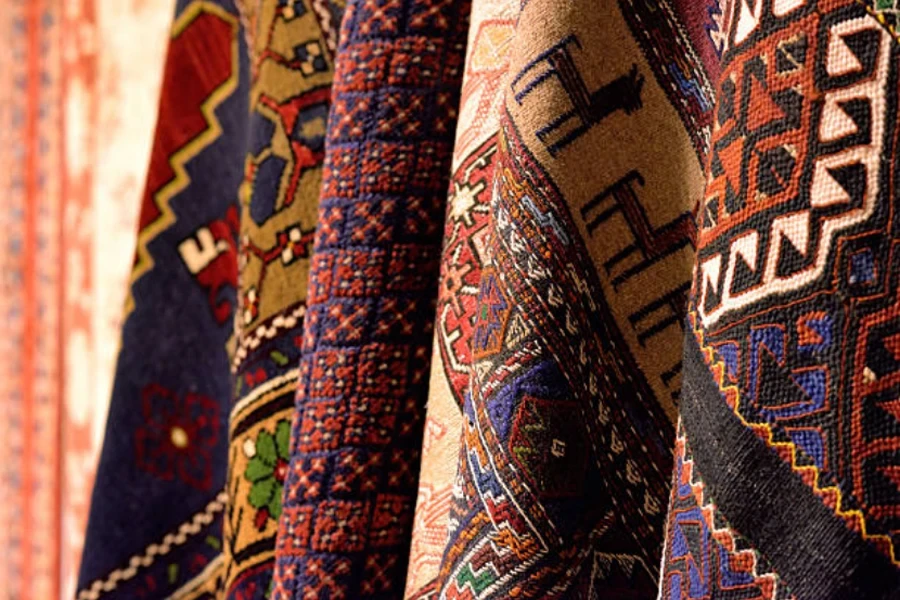
Weaving Techniques and Rug Construction: The construction of a rug significantly influences its durability. Flat weave rugs are particularly suited for high-traffic areas due to their tight construction and lack of pile, which minimizes the accumulation of dirt and simplifies cleaning. These rugs can endure heavy use without showing signs of wear, making them an excellent choice for busy households. High pile rugs, while luxurious and soft, are less practical for high-traffic areas due to their maintenance requirements and tendency to show wear more quickly. Low pile and flat weave options, on the other hand, offer a balance between comfort and practicality, providing a durable surface that’s easier to keep clean.
Color and Pattern Considerations: Choosing the right color and pattern can also play a crucial role in a rug’s appearance over time. Darker colors and complex patterns are adept at hiding stains and signs of wear, making them more forgiving in high-traffic settings. Conversely, light-colored rugs can show stains and wear more readily, requiring more frequent cleaning.
In summary, selecting the ideal area rug for high-traffic areas involves a careful consideration of materials, construction, and aesthetic choices. Synthetic fibers like polypropylene and nylon offer durability and ease of maintenance, while wool provides a premium, resilient option. Flat weave construction and strategic color choices can further enhance a rug’s suitability for busy spaces, ensuring both longevity and visual appeal.
Style versus function: Achieving balance

When selecting the ideal area rug, finding a harmony between aesthetic appeal and practical functionality is essential. This balance ensures the rug not only complements the decor but also meets the demands of everyday use, especially in high-traffic areas.
Aesthetic appeal: The visual aspect
Color and Pattern: The choice of color and pattern significantly impacts a room’s overall appearance. For example, a brightly colored rug with a bold pattern can serve as a focal point in a room with neutral walls and furniture, injecting vibrancy and character. Conversely, a rug with muted tones and subtle patterns can enhance a space’s calming atmosphere. Consider the existing color scheme and how a rug’s colors and patterns will complement or contrast with it.
Style Compatibility: The rug’s style should align with the room’s decor theme. A traditional Persian rug can add a touch of elegance to a classic living room, while a geometric-patterned contemporary rug suits modern minimalist interiors. The key is to ensure the rug does not clash with the room’s aesthetic but rather enhances or complements it.
Texture: The texture adds another layer of depth to the room’s decor. A shaggy rug can add warmth and softness to a cozy, casual living space, while a flat-weave rug might be more suitable for a sleek, modern setting. The texture also affects the rug’s visual appeal, with different materials reflecting light differently and contributing to the room’s ambiance.
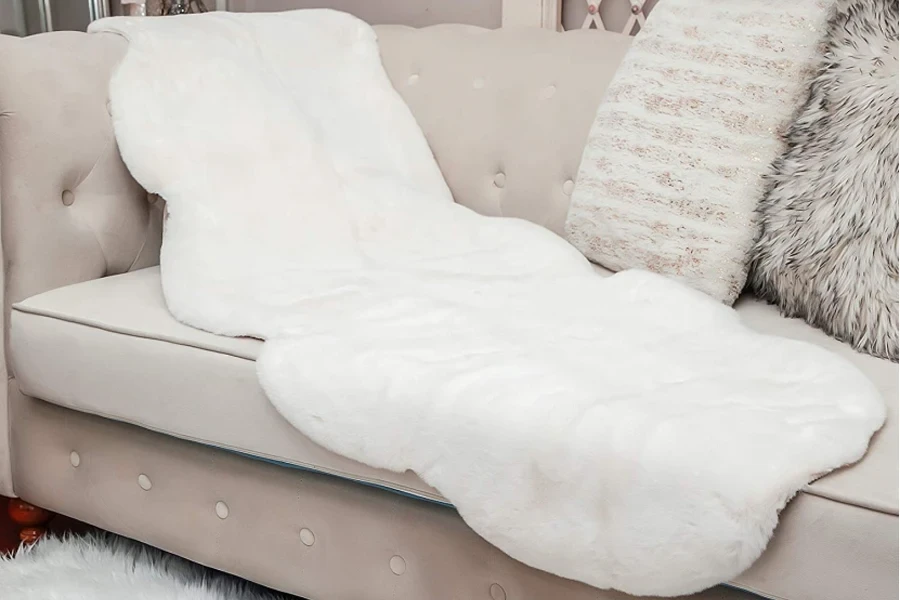
Functional requirements: The practical aspect
Durability: In high-traffic areas, the rug’s durability is paramount. Materials like polypropylene, nylon, and wool are known for their resilience. A densely tufted or woven rug can withstand heavy foot traffic better than a loosely woven one. Consider where the rug will be placed and the level of activity it will endure. For instance, a wool rug might be ideal for living rooms due to its durability and ease of cleaning, whereas a delicate silk rug could be reserved for less frequented areas.
Ease of Maintenance: The rug’s material also dictates its maintenance needs. Synthetic rugs are generally easier to clean and more resistant to stains, making them suitable for spaces like dining areas or children’s rooms. Natural fibers like wool require more care but offer a warmth and texture that synthetics cannot match. Consider your lifestyle and the time you are willing to dedicate to rug maintenance when making your choice.
Safety and Comfort: For homes with elderly residents or young children, the rug’s slip resistance and cushioning become important factors. Rugs with non-slip backings or those placed over a suitable pad can prevent accidents. Additionally, the rug’s pile height contributes to its comfort underfoot, with higher pile rugs offering more cushioning but potentially being more challenging to clean.
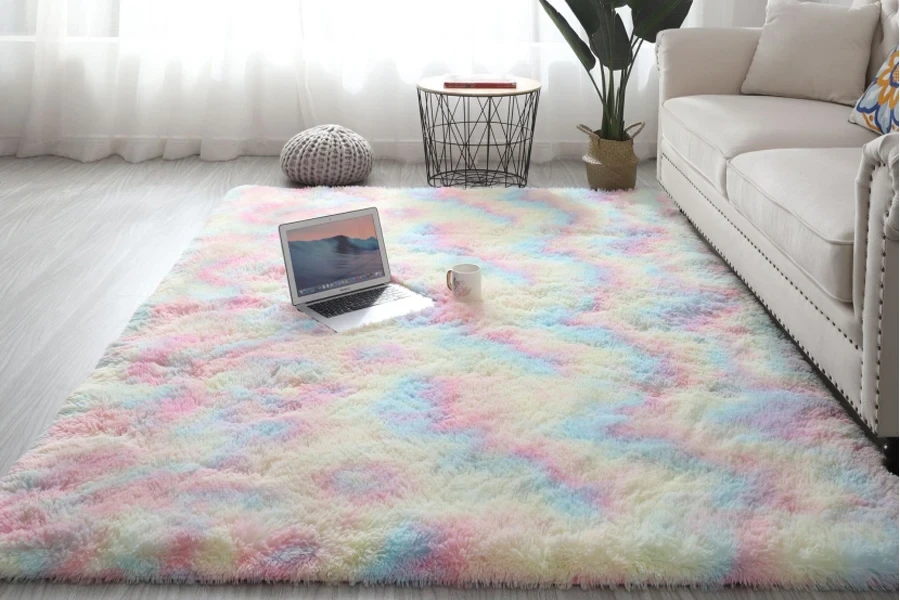
Balancing the two
Achieving a balance between style and function involves weighing the aesthetic qualities you desire against the practicalities of your lifestyle and the space’s usage. For example, a family room that sees daily use and occasional spills would benefit from a durable, easy-to-clean rug that still matches the decor’s theme. In contrast, a formal living room used mainly for entertaining might prioritize style over durability, allowing for more delicate materials or intricate designs.
In conclusion, selecting the ideal area rug requires a thoughtful consideration of both its aesthetic appeal and practical functionality. By carefully evaluating the intended space, lifestyle needs, and personal style preferences, you can find a rug that not only enhances your home’s decor but also stands up to the demands of everyday life.
The importance of pile height and texture

When selecting an area rug, the pile height and texture are crucial factors that significantly influence comfort, maintenance, and the overall aesthetic appeal of the rug within a space. Understanding these elements can help you choose a rug that not only meets your stylistic preferences but also accommodates your practical needs.
Pile height: Comfort and maintenance
Low Pile Rugs: Typically less than 1/4 inch, low pile rugs are known for their ease of maintenance and durability. Their shorter fibers are less likely to trap dust, making them an excellent choice for allergy sufferers or high-traffic areas such as living rooms and hallways. The reduced height makes it easier to move furniture on them and less likely for edges to catch and cause tripping. An example of a low pile rug is the traditional Berber rug, which is ideal for offices or busy family rooms due to its resilience and easy-to-clean surface.
Medium Pile Rugs: Offering a balance between comfort and ease of cleaning, medium pile rugs (usually 1/4 to 1/2 inch) provide a softer surface underfoot than low pile rugs, making them a comfortable choice for bedrooms and living areas where you might spend a lot of time sitting or lying on the floor. They strike a good balance, offering plushness without the challenges of deep cleaning that come with higher pile rugs.
High Pile Rugs: Often more than 1/2 inch, high pile rugs, such as shag rugs, are valued for their luxurious feel and aesthetic. They add warmth and texture to a room, making spaces feel cozy and inviting. However, they require more maintenance and are best suited for low-traffic areas or places where comfort is prioritized over practicality, such as bedrooms. The plush nature of high pile rugs can also affect the room’s acoustic properties, absorbing sound and making the space quieter.
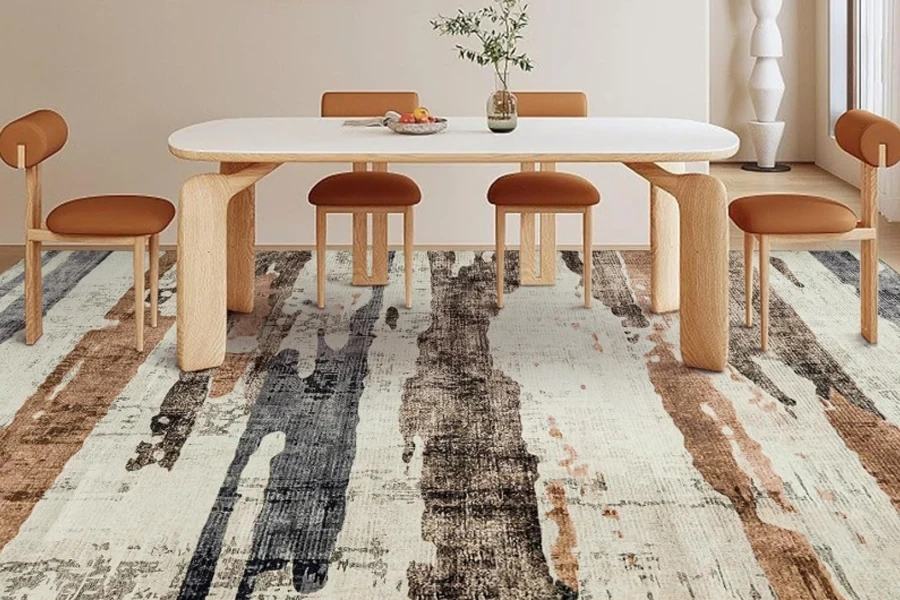
Texture: Aesthetic and tactile appeal
Wool Rugs: Known for their durability and softness, wool rugs offer a rich texture that can add depth and warmth to a room. The natural fibers provide a comfortable, cushioned feel underfoot, suitable for colder climates or areas where comfort is a priority. Wool’s natural stain resistance and ease of cleaning make it a practical choice for both high-traffic and intimate spaces.
Synthetic Rugs: Rugs made from synthetic fibers, such as nylon, polyester, and polypropylene, offer a variety of textures, from soft and plush to sleek and smooth. These materials can mimic the look and feel of natural fibers but at a lower cost and with added durability and stain resistance. Synthetic rugs can introduce a modern touch to a room and are particularly suitable for areas prone to spills or heavy use.
Natural Fiber Rugs: Rugs crafted from jute, sisal, and seagrass bring a distinct, organic texture to a space, contributing to a natural, earthy aesthetic. These materials are durable and relatively easy to care for, making them suitable for dining areas, kitchens, and entryways. However, the rougher texture may not be ideal for areas where bare feet are common, such as bedrooms.
Balancing the considerations of pile height and texture requires weighing the functional needs of your space against the desired aesthetic and comfort level. Whether you’re looking for a rug that stands up to heavy foot traffic with minimal maintenance or one that adds a luxurious, tactile experience to a quieter part of your home, understanding these aspects can guide you to the ideal choice that meets both your practical requirements and stylistic preferences.
Leading models and what sets them apart
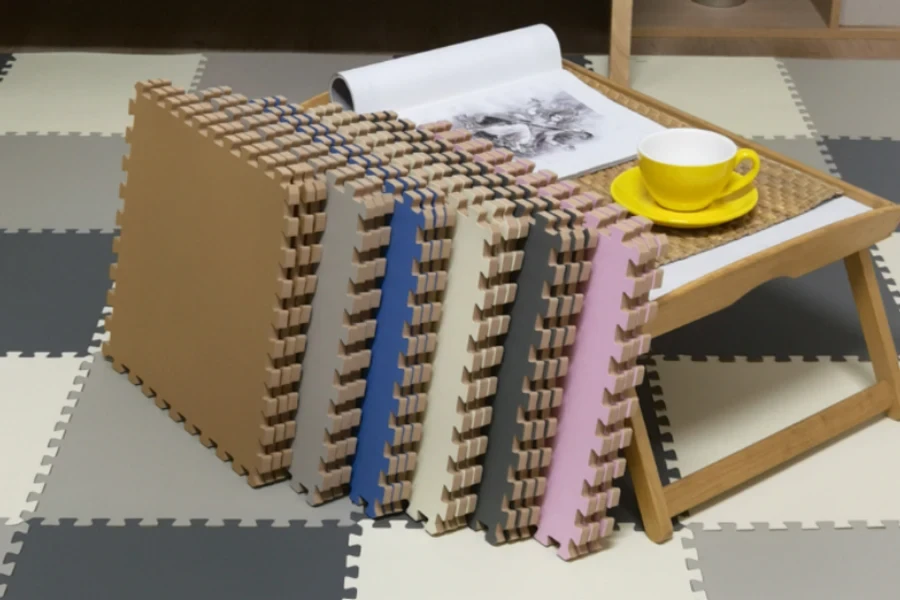
The area rug industry in 2024 is characterized by significant innovations in design and material, marking a departure from traditional offerings. These advancements have not only redefined the aesthetic and functional aspects of area rugs but have also introduced a range of products that stand out in the market for their unique characteristics and superior performance.
Innovations in design and material
The evolution of area rugs in recent years has been significantly influenced by technological advancements and creative design approaches. As the market continues to evolve, these innovations not only cater to the current demand for multifunctional and aesthetically pleasing home decor but also pave the way for future advancements in the industry.
Shag Area Rug: Shag area rugs are the epitome of comfort and coziness, featuring a deep, plush pile that invites you to sink your feet into. These rugs are perfect for adding a layer of softness and warmth to any room, making them ideal for bedrooms, living rooms, and other spaces where comfort is key. Despite their luxurious texture, shag rugs can be surprisingly durable and easy to care for, with materials like polypropylene and polyester ensuring they remain soft and vibrant over time. Available in a range of colors and sizes, shag rugs offer a versatile option for those looking to create a cozy, inviting atmosphere in their home.
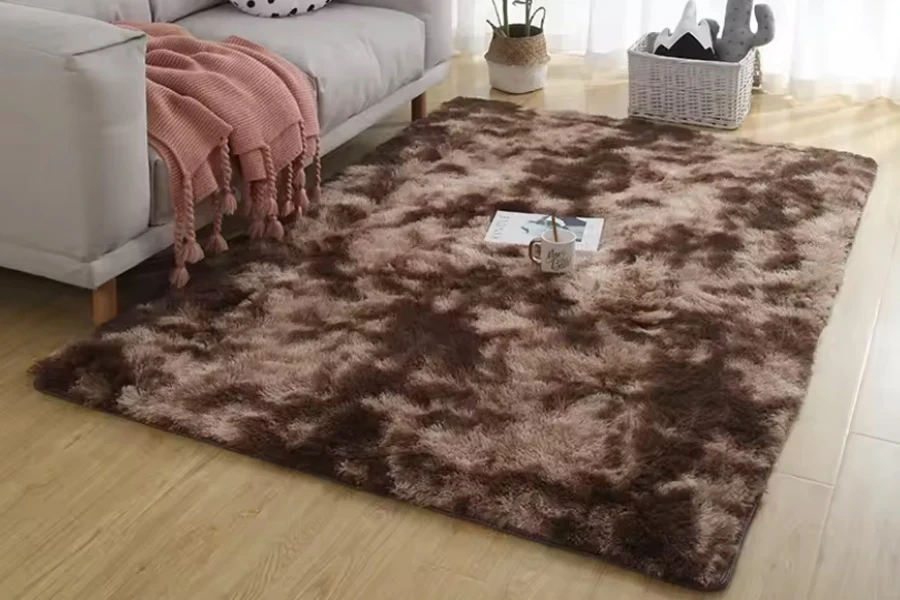
Smart Tech Spill-Proof Rugs: Revolutionizing the industry with their advanced spill-proof technology, these rugs are designed to repel liquids, making them ideal for dining areas, kitchens, and family rooms. Beyond their functional innovation, they come in a variety of styles and patterns, ensuring that aesthetic appeal is not sacrificed for functionality.
3D Artisan Rugs: By leveraging 3D printing technology, these rugs offer a new dimension in home decor. With the ability to create elevated textures and patterns, they provide an artistic and sensory experience unmatched by traditional rugs. These rugs are particularly favored for statement pieces in living rooms and galleries, where design takes center stage.
Therma Comfort Heated Rugs: Addressing the demand for comfort in colder climates, these rugs feature integrated heating elements that are energy-efficient and safe. With adjustable temperature settings and uniform heat distribution, they offer a cozy underfoot experience without the need for bulky external heaters. Their innovative approach to combining comfort with energy efficiency has made them a groundbreaking addition to the market.
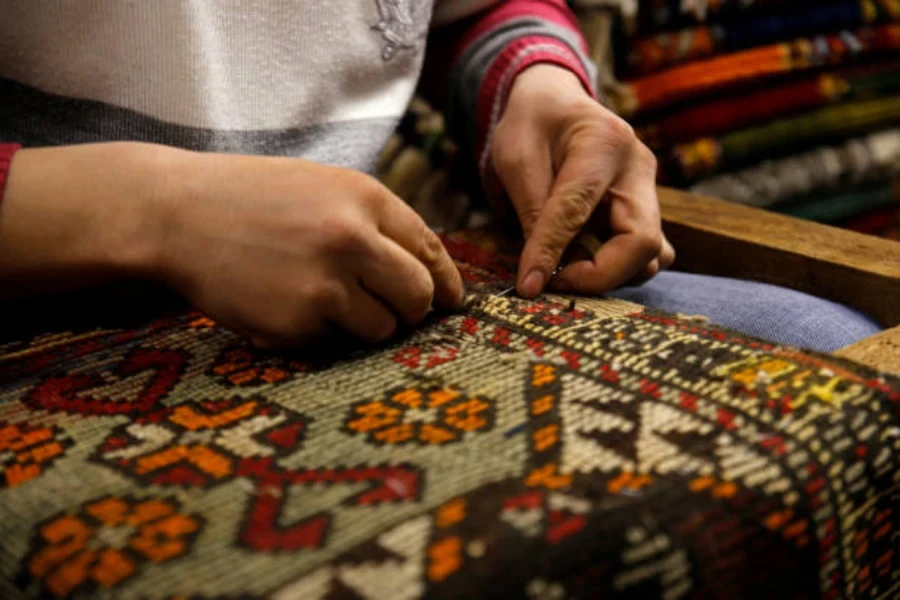
Vintage-Inspired Area Rug: Vintage-inspired area rugs are known for their ability to add a timeless charm and character to any room. These rugs often feature distressed patterns and a faded color palette to emulate the look of antique rugs. The durability and ease of cleaning are crucial for these rugs, as they combine aesthetic appeal with practicality. They are typically made from materials like polyester, which offers a balance between softness and resilience, making them suitable for both high-traffic areas and spaces where comfort is a priority. With a low pile height, they provide a flat surface that’s easy to maintain, adding a vintage touch without the upkeep of a genuine antique.
Each of these rugs brings its unique style and set of benefits to the table, from the antique charm of vintage-inspired designs to the classic elegance of traditional rugs and the unmatched comfort of shag rugs. Whether you’re looking to make a statement with your decor or simply add a touch of comfort to your home, these options provide a range of choices to suit various tastes and needs.
Spotlight on top performers and their features
In the realm of standout area rugs, several models have distinguished themselves through their innovation, design, and functionality:
Rifle Paper Co Rug: This rug is known for its colorful, floral, and feminine designs that add beauty to any space. The latest Spring collection features textiles from Loloi with Rifle Paper Co’s signature designs, offering a dark option with muted flowers for an understated girly aesthetic. Despite not being machine washable, the rug is easy to maintain with frequent vacuuming and spot cleaning. It features carved details for added dimension and a small fringe for a playful touch, making it a unique addition to any decor. The pile height is 0.13 inches, and it comes in sizes ranging from 2.5×4 to 9×12 feet.
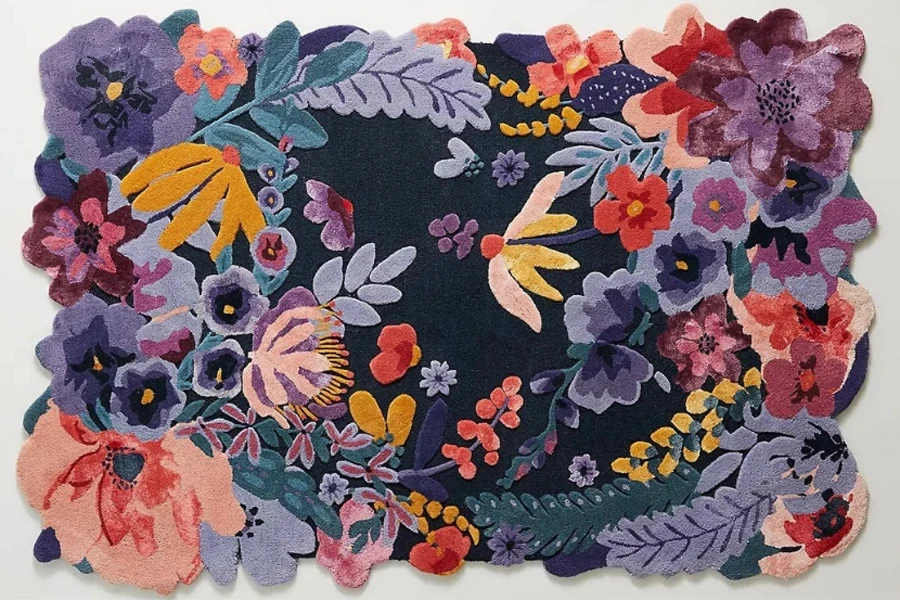
Tuscan Dotted Diamond Trellis Nursery Rug (Rugs USA): This rug is highlighted for its comfort, hypoallergenic properties, and ease of cleaning, making it ideal for a nursery. Made from 100 percent natural wool, it’s soft, comfortable, and perfect for a baby’s sensitive skin. Its low-pile weave contributes to its durability and ease of cleaning, with the option for spot treatment or steam cleaning. It’s available in two sizes and five color options, ranging from pale pink to blue, catering to different nursery themes and preferences.
Pottery Barn Chunky Knit Sweater Rug: This rug is likened to a favorite chunky knit sweater, offering warmth and comfort. It’s handwoven with thick yarn to mimic a cable-knit sweater, supporting artisans around the world and promoting environmental sustainability through the use of recycled and reclaimed materials. Note that slight shedding may occur initially but will decrease with regular vacuuming. Professional cleaning is recommended for this rug, which may not be the best choice for households with kids or pets due to its maintenance requirements. The pile height is 0.5 inches, and it’s available in various sizes from 2.5×9 to 12×18 feet.

Samaniego Oriental Hand-Tufted Area Rug (Wayfair): The Samaniego Oriental Hand-Tufted Area Rug is celebrated for its durability and ease of cleaning, making it an ideal choice for high-traffic areas like the living room. Despite lacking a warranty, its wool construction promises longevity and a high-end look, while the dark blue color with patterns or speckles is designed to conceal minor debris effectively. Available in a wide range of sizes and shapes, including rectangle, round, and square, this rug features a pile height of 0.5 inches. Its versatility in color and size options ensures it can complement various interior designs and spaces.
Ruggable Medium Pile Rugs: Ruggable’s line of medium pile rugs brings the perfect blend of luxury and practicality to any room. These rugs are three times thicker than traditional Ruggable rugs, providing extra plush comfort underfoot without sacrificing the brand’s signature washability. While they may take longer to dry, their machine-washable nature, coupled with water- and stain-resistant properties, makes them a convenient choice. The vibrant, modern design adds a pop of color and symmetry, ideal for brightening living or bedroom spaces. With a pile height of 0.3 inches and available in various sizes, these rugs offer both aesthetic appeal and functional benefits.
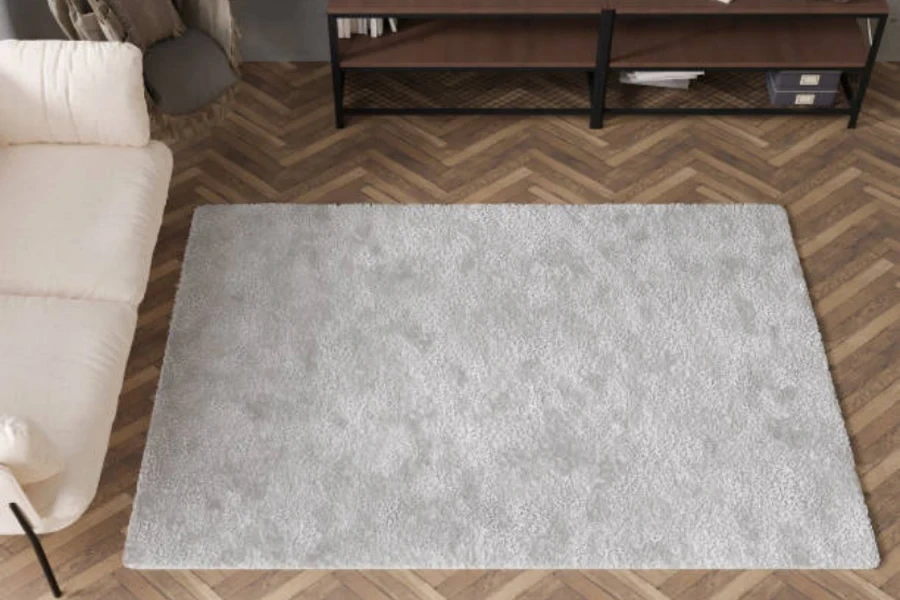
Herringbone Handwoven Indigo Mat: This beautiful handwoven indigo mat is a testament to sustainable living, combining affordability with eco-friendly materials. Its soft cotton makeup provides a gentle underfoot experience, albeit with a recommendation for a rug pad to prevent slippage. The subtle chevron pattern enhances any room’s decor without overwhelming it, making it suitable for almost any indoor setting. Despite its plushness not being the plushest on the market, its affordability, variety in colors, sizes (ranging from 2×3 to 10×14 feet), and a pile height of 0.25 inches make it a compelling choice for those seeking style and sustainability.
Each rug has been carefully selected for its unique attributes, ensuring there’s an option for every preference and room requirement, from the durable and classic appeal of wool to the innovative, washable designs of Ruggable, and the sustainable, artisanal charm of a handwoven cotton mat.
Conclusion
Selecting the ideal area rug in 2024 requires a nuanced approach that marries style with functionality, accommodating the swift pace of market trends. The choice extends beyond mere aesthetics, delving into the material’s inherent qualities—from the enduring appeal of wool to the practicality of synthetics and the natural charm of cotton. Additionally, understanding the specific demands of different spaces ensures that each rug not only enhances the decor but also stands up to the rigors of its environment, whether it be the bustling activity of high-traffic areas or the serene calm of private retreats. This careful consideration of materials, coupled with a keen eye for design trends, guarantees a selection that is both timeless and reflective of current tastes, ensuring that every choice is a step towards crafting a more beautiful, functional, and cohesive space.




